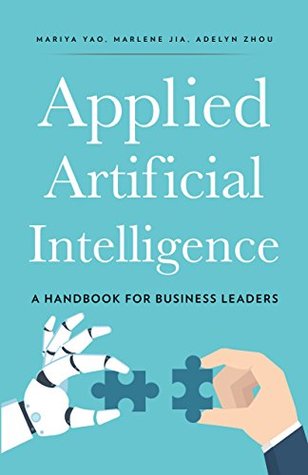More on this book
Community
Kindle Notes & Highlights
by
Mariya Yao
Read between
October 3 - October 22, 2019
Approaches that work well for solving narrow problems do not generalize well to tasks such as abstract reasoning, concept formulation, and strategic planning—capabilities that even human toddlers possess but our computers do not.
Statistics is generally not considered part of AI, but many statistical techniques form the foundation for more advanced machine learning techniques or are used in conjunction with them.
Descriptive statistics
Inferential statistics
Because the analysis is done on a subset of the total data, the conclusions that can be reached with inferential statistics are never 100 percent accurate and are instead only probabilistic bets.
Data mining
The goal of data mining is to extract patterns and knowledge from large-scale datasets so that they can be reshaped into a more understandable structure for later analysis.
The most successful form of symbolic systems is the expert system, which mimic the decision-making process of human experts.
Rule-based expert systems are most effective when applied to automated calculations and logical processes where rules and outcomes are relatively clear.
The rules engine and knowledge base for any expert system must be hand-engineered by domain experts.
Machine learning enables computers to learn without being explicitly programmed.
Supervised learning occurs when the computer is given labeled training data, which consists of paired inputs and outputs (e.g. an image of a cat correctly labeled as “cat”), and learns general rules that can map new inputs to the correct output.
Unsupervised learning occurs when computers are given unstructured rather than labeled data, i.e. no input-output pairs, and asked to discover inherent structures and patterns that lie within the data. One common application of unsupervised learning is clustering, where input data is divided into different groups based on a measure of “similarity."
Semi-supervised learning lies between supervised and unsupervised learning.
Active learning, a special case of semi-supervised learning, occurs when an algorithm actively queries a user to discover the right output or label for a new input.
Reinforcement learning is learning by trial-and-error,
The program learns by repeatedly taking actions, measuring the feedback from those actions, and iteratively improving its behavioral policy.
Deep learning is a subfield of machine learning that builds algorithms by using multi-layered
layered artificial neural networks, which are mathematical structures loosely inspired by how biological neurons fire.
While deep learning models outperform older machine learning approaches to many problems, they are more difficult to develop because they require robust training of data
sets and specialized expertise in optimization techniques.
Deep learning also suffers from technical drawbacks. Successful models typically require a large volume of reliably-labeled data, which enterprises often lack.
After deployment, they also require constant training and updating to maintain performance.
Probabilistic programming enables us to create learning systems that make decisions in the face of uncertainty by making inferences from prior knowledge.
Probabilistic programs have been used successfully in applications such as medical imaging, machine perception, financial predictions, and econometric and atmospheric forecasting.
Ensemble methods, for example, combine different machine learning models or blend deep learning models with rule-based models.
There are four broad categories of ensembling: bagging, boosting, stacking, and bucketing.
appliedaibook.com/resources.
Systems That Act
Systems That Act,
These are systems that function according to some predefined script, often by following manually programmed if-then type of rules.
Yet most companies claiming to have AI are really just using Systems That Act, or rule-based mechanisms that are incapable of dynamic actions or decisions.
Systems That Predict
Systems That Predict are systems that are
capable of analyzing data and using it to produce probabilistic predictions. Note that a “prediction” is a mapping of known information to unknown information and do...
This highlight has been truncated due to consecutive passage length restrictions.
In business analysis, lack of data integrity and methodological mistakes are extremely common and often lead executives to the wrong conclusions.
Systems That Learn
While Systems That Learn also make predictions like statistical systems do, they require less hand-engineering and can learn to perform tasks without being explicitly programmed to do so.
Many enterprise applications of statistics and machine learning focus on improving the prediction process. In sales, for example, machine learning approaches to lead scoring can perform better than rule-based or statistical methods.
Systems That Create
Recent breakthroughs in neural network models have inspired a resurgence of computational creativity, with computers now capable of producing original writing, imagery, music, industrial designs, and even AI software!(12)
Systems That Relate
As human employees increasingly collaborate with AI tools at work and digital assistants like Apple’s Siri and Amazon Echo’s Alexa permeate our personal lives, machines will also need emotional
intelligence to succeed in our society.
Sentiment analysis, also known as opinion mining or emotion AI, ex...
This highlight has been truncated due to consecutive passage length restrictions.
emotional states from our text, voice, facial expressions, an...
This highlight has been truncated due to consecutive passage length restrictions.
Systems That Master
A System That Masters is an intelligent agent capable of constructing abstract concepts and strategic plans from sparse data.
Systems That Evolve
While we continue to search for other intelligent life, we are not yet aware of any


